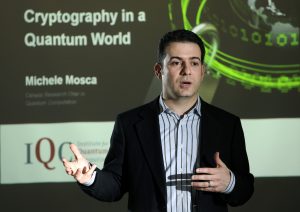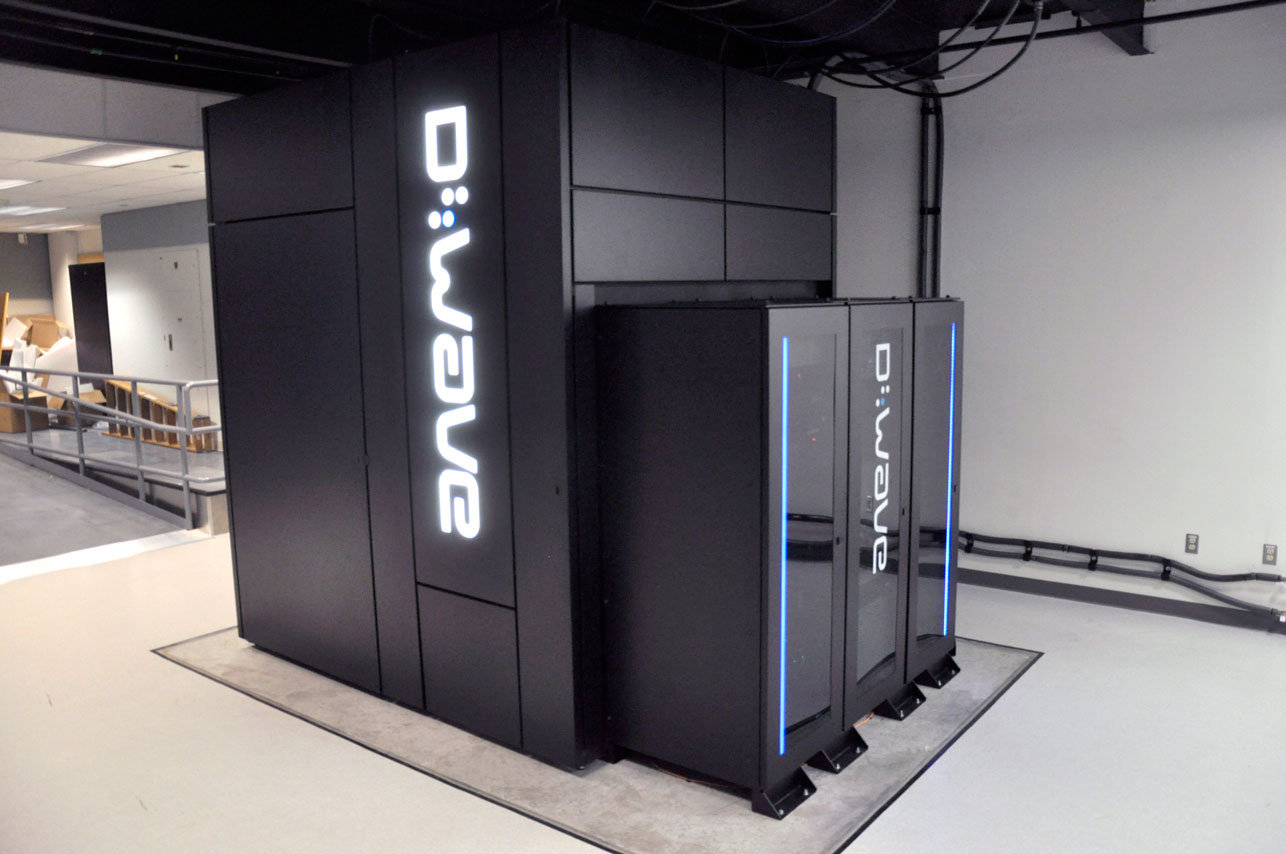Quantum computing is trending!
A YouTube clip from our Prime Minister (a trending topic on his own these days) will do that!
Re-affirming his government’s budget announcement to provide some $50 million to the Perimeter Institute for Theoretical Physics in Waterloo, ON, Prime Minister Justin Trudeau recently added to his international Internet rep with a short-and-sweet explanation of just what the heck quantum computing is; the clip was recorded while the PM was visiting Waterloo, and promoting the region’s recognized global leadership in the field.
The $50 million in federal funding will be spread over five years, intending to strengthen the Institute’s position as a world-leading research centre for theoretical physics and to boost women’s participation in science overall, as Bardish Chagger, the Minister for Small Business and MP for Waterloo, added during recent press events in the region.

Institute for Quantum Computing at the University of Waterloo Deputy Director Michele Mosca is gearing up for the quantumexhibit.ca road tour that is designed to help us all understand and appreciate quantum computing. The launch of IQC was funded by Mike and Ophelia Lazaridis, who have donated more than $100 million since 2002.
There will be many more media events to come, as another quantum computing group at the University of Waterloo is planning Quantum: The Exhibition, an interactive multimedia travelling exhibit that will also help explain the core concepts of quantum mechanics (apparently, the PM’s shared insights are just not enough to fully explain what other researches have called “spooky”, “weird” and “capable of outpacing humans in … everything!”
That last description comes from Dr. Geordie Rose, co-founder of D-Wave, a quantum computing and advanced technology company based in British Columbia.
The quantum computer’s power, Rose explains, comes from its ability to work with ‘qubits’, or quantum bits, which strangely enough can exist in two states at once.
Today’s silicon computer works with regular bits, and they’re always in one state or another: always on or off, zero or one.
Qubits can bizarrely be both on and off at the same time, and that simultaneity can be used to speed up processing capabilities enormously.
But all that qubit-counting generates a lot of computational heat, so D-Wave’s 512-qubit processor is housed in a giant fridge, a cryogenically-cooled 10-metre square black cabinet, inside which super-conducting processors are mounted.
Dr. Rose calls the apparatus “an altar to an alien being” because of its futuristic look and capabilities.
That altar will not be part of the upcoming quantum tour, but the 4,000 sq. ft. exhibition that opens in Waterloo Region later this fall and then travels to science centres across the country will provide information and insight into the quantum world using original multimedia, video and hands-on interactive content.
The Institute for Quantum Computing is one of five partners developing the interactive tour, including Perimeter Institute for Theoretical Physics, Actua, the Canadian Association of Science Centres and the Canada Science and Technology Museums Corporation.
Meanwhile, IBM is making quantum computing resources available as a cloud service.
IBM is now allowing interested parties (mostly researchers and the like) to access a 5-qubit quantum computer called the IBM Quantum Experience, which lives at an IBM Quantum Computing Research Lab in New York State.
Any number of financial, operational, jurisdictional and business applications that are too difficult for old-fashioned silicon computers are now being accelerated by the latest in quantum computing products and services, developed and marketed around the world by companies like D-Wave and IBM among others.
Researchers are using quantum computers to streamline the number-crunching and advanced processing needed to manage complex and interconnected subjects such as astronomical observations; synaptic mapping in the human brain (and all the connections in its techno-counterpart, the Internet); sophisticated cyber security and data encryption techniques; advanced weather prediction and climate modelling, and more.
At the NASA’s Quantum Artificial Intelligence Laboratory (where one of D-Wave’s altars is in operation) , quantum computing is described as being able to “solve certain problems in a few days that would take millions of years on a classical computer”.
At Google (the company is another D-Wave system owner and operator), the quantum activities are not as well known, but quantum tools are known to help “reduce the impact of the inevitable distortions that arise every time someone collects data about the real world.”
Inevitable distortions every time?!?
That’s what Seth Lloyd says; he’s Professor of Mechanical Engineering at M.I.T., he’s active in quantum computing and algebraic processor topology research and development, and he’s been to the Waterloo high-tech region on a number of occasions, noting how “IQC and Waterloo are now a world-centre for quantum computing. Everybody knows about it, everybody comes here.”
Everyone in his circle seems to know about those inevitable distortions, too, and they all seem to know as well that “[quantum computers will cause] all of our data to eventually become public.”
That’s Chris Warren, from the IQC’s Engineered Quantum Systems Lab. As he explains it, the sophistication of even 500-digit or more encryption is easy to decipher with quantum computing.
“What will we do when a quantum computer renders our encryption useless?” Warren asks almost rhetorically, with a somewhat sobering answer at the ready:
“The answer, of course, will be to rely upon a new form of quantum cryptography.”
And another altar at which to worship.
-30-




